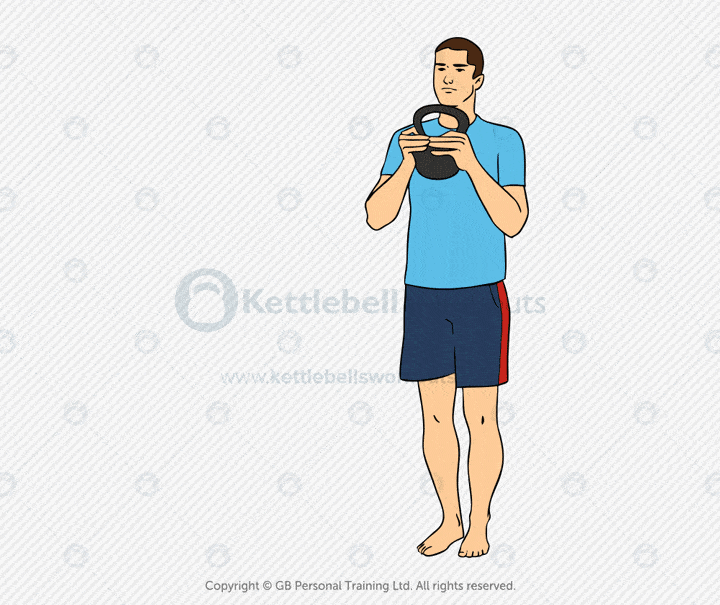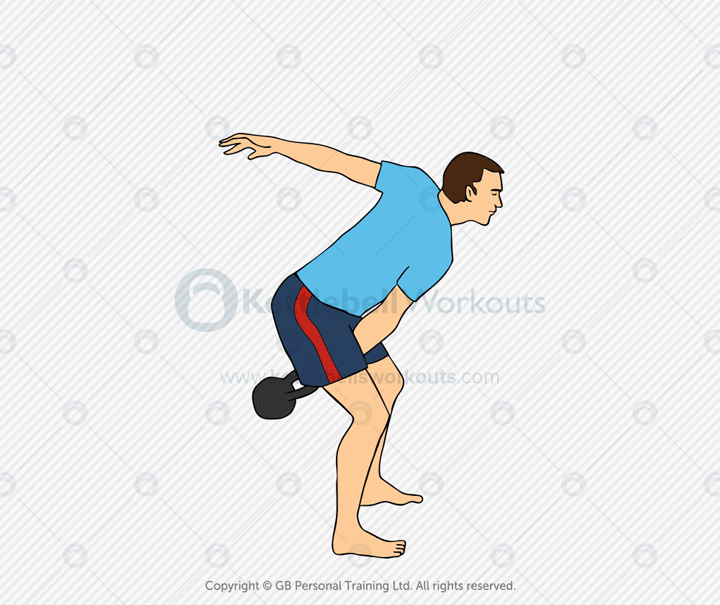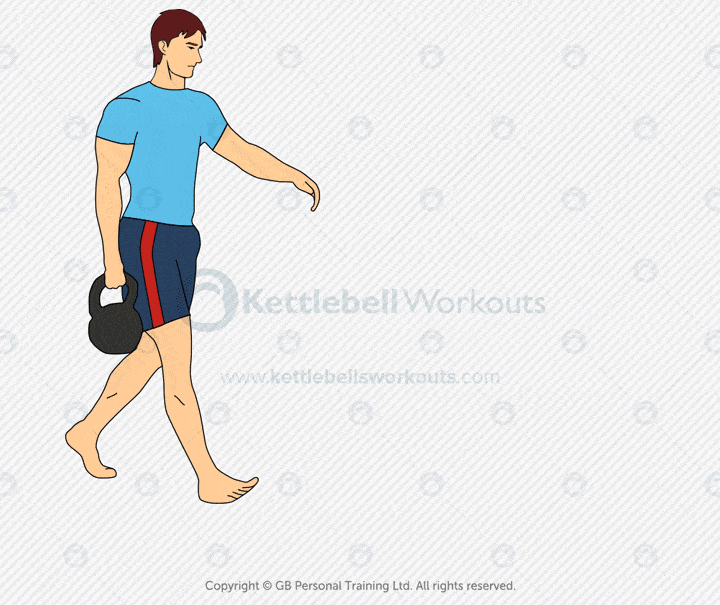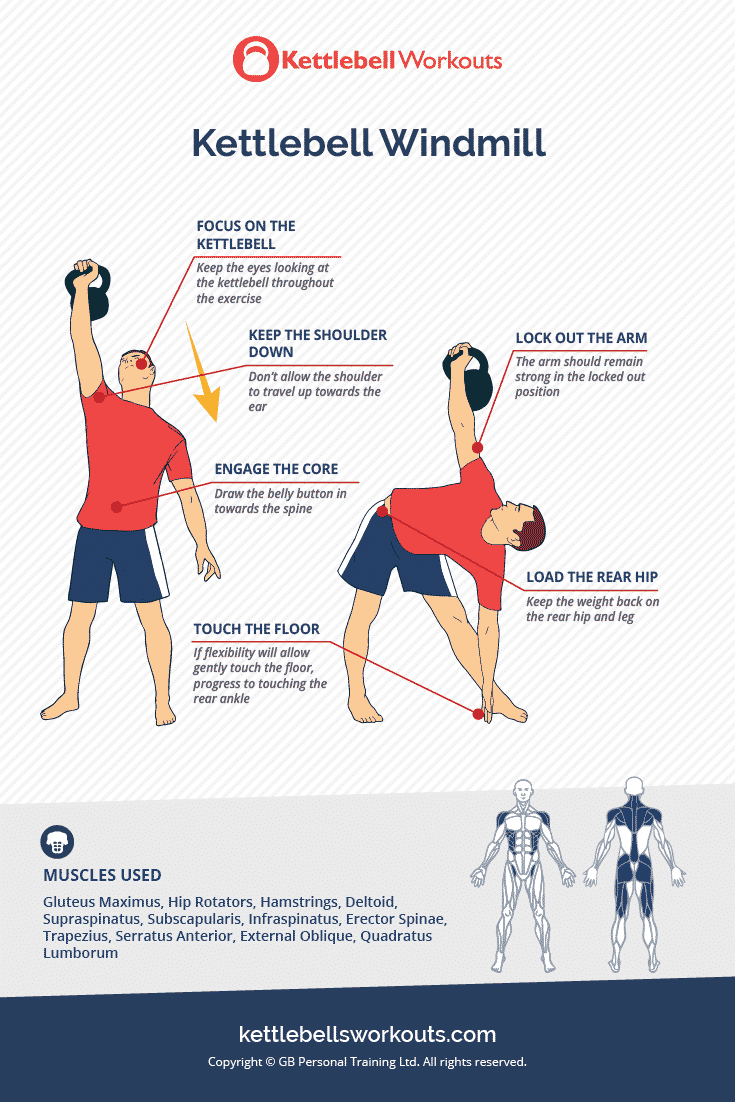Last Updated on 29 July 2025 by Greg Brookes

The kettlebell side stepping swing is an energetic variation of the traditional one-handed swing, adding lateral footwork to create a rhythm-driven, full-body challenge.
By stepping sideways between each rep, this drill enhances agility, coordination, and fluidity, while still delivering the same explosive hip power of the standard swing.
More than just a conditioning tool, the side stepping swing allows you to move across space while keeping the kettlebell in constant motion, making it ideal for flow-based workouts and high-energy circuits.
What Is the Kettlebell Side Stepping Swing?
The kettlebell side stepping swing is a unilateral hip hinge movement where you combine a standard one-arm swing with a lateral step. After each swing, you take a sideways step, either to the left or right, then repeat the motion with the opposite arm.
It’s a seamless way to move through space while maintaining swing mechanics. The added lateral step challenges your balance, timing, and control, forcing your body to adapt under dynamic load.
Why It Matters
Adding a side step might seem minor, but it changes everything:
- Boosts coordination and balance: You must time each foot movement with the arc of the bell.
- Increases lateral stability: Engages hip abductors and glutes more than static swings.
- Improves spatial awareness: Especially useful for flow-based or tactical training.
- Raises metabolic demand: Movement across space increases intensity and heart rate.
- Enhances flow training: Lets you switch directions or integrate transitions naturally.
Muscles Worked
- Glutes and hamstrings (primary hip drivers)
- Quads and adductors (assist with the step)
- Core and obliques (maintain rotation control during transitions)
- Shoulders and lats (decelerate and stabilise the bell)
- Hip stabilisers (especially during the step phase)
How to Do the Kettlebell Side Stepping Swing (Step-by-Step)
- Start with feet shoulder-width apart, kettlebell slightly in front of you.
- Hinge at the hips, grip the handle with two hands.
- Hike the kettlebell back between your legs and explode upward into a two-handed swing.
- As the bell reaches chest height and floats, step laterally to one side.
- Time your step so the kettlebell passes between your legs just after your foot plants.
- On the next swing, continue or step to the other side.
Tip: Keep your steps small and deliberate. Focus on staying square through your shoulders and hips.
Watch the Kettlebell Side Stepping Swing in Action
Common Mistakes to Avoid
- Overstepping and losing balance mid-swing
- Swinging before planting the foot, which throws off timing
- Letting the torso twist too far, stay square to maintain alignment
- Neglecting hinge mechanics, don’t turn it into a squat
Warm-Up Drills to Prep for the Movement
- Lateral lunges – 6 reps each side
- Bodyweight hip hinges – 10 reps
- One-arm kettlebell swings – 5 each side
- Farmer’s carry with side steps – 20 seconds each way

Programming Tips and Reps
- Perform 8–12 reps total (4–6 each side) for strength
- Use 20–30 total reps for cardio and conditioning
- Ideal for EMOMs, flows, or movement chains
Pair With:
- Kettlebell clean to lateral step
- Side stepping goblet squat
- Alternating kettlebell swing
- Kettlebell snatch or high pull

When to Use This Exercise
- To break up static swing sets with movement
- In kettlebell flow sequences
- For lateral agility and athletic development
- As part of a warm-up or movement prep
Coach’s Insight: Greg’s Take
Most people train in straight lines. The side-stepping swing pulls you out of that comfort zone.
I use it often to bridge between movements in a flow or to develop athletic qualities in clients who need more lateral strength and control. The footwork adds just enough complexity to challenge coordination, without losing the essence of the swing.
Side Stepping vs Traditional Swing
- Traditional: Static stance, vertical hip power
- Side stepping: Adds horizontal shift and footwork
- Use side stepping swings when you want to challenge coordination and maintain movement across space
Who Should Do This Exercise?
- Kettlebell users looking to expand flow options
- Athletes needing more lateral movement drills
- Trainers building functional movement sequences
- Anyone bored with static swings and ready for a fun challenge
Related Exercises You Can Try Next
- Kettlebell lateral lunge
- Lateral clean and press
- Side step snatch
- Kettlebell swing to side squat
Want More Smart Kettlebell Training?
Get stronger, move better, and expand your training vocabulary.
Check out my full kettlebell flow series and movement skill drills for total-body conditioning.
Add more movement complexity to your swings. Explore all kettlebell exercises for lateral strength.
Frequently Asked Questions
Yes—but only after they’ve mastered the standard swing. Start slow, use a light kettlebell, and keep the step shallow.
It doesn’t matter. Alternate sides to keep things balanced and develop coordination on both ends.
Start with a lighter bell than your usual swing. Control is more important than load here.
Absolutely. It’s one of the best bridges for transitioning from one move to another without stopping the kettlebell.




Comments